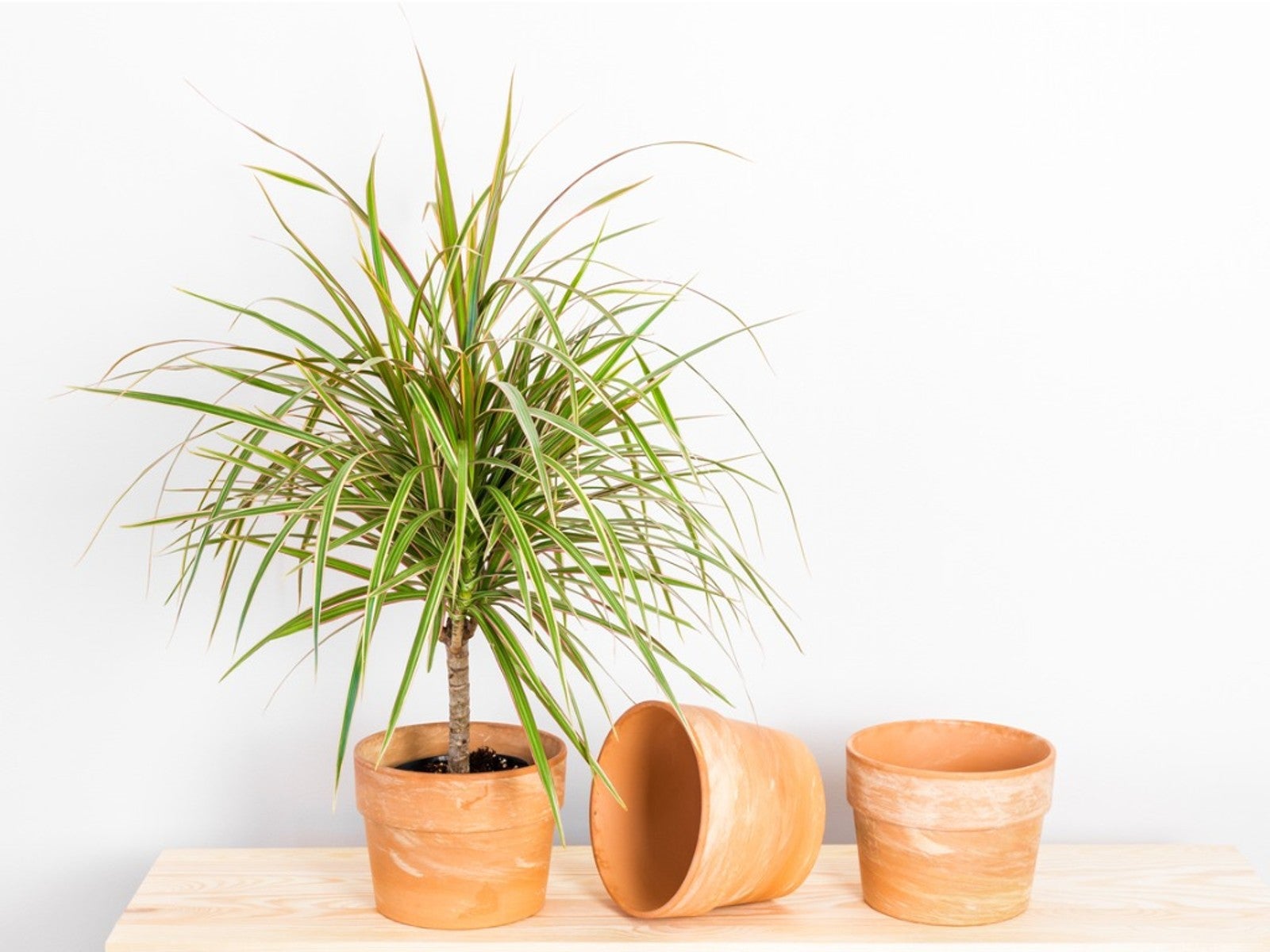Dracaena Care: How To Grow A Dracaena As A Houseplant


Teo Spengler
Quick Dracaena Facts:
- Botanical name: Dracaena spp.
- Height: 2 to 20 feet indoors (6 m)
- Spread: to 6 feet (1.8 m)
- Sun exposure: bright indirect light to partial shade
- Soil requirements: rich, well-draining soil with plenty of organic material
- USDA Hardiness zones: 7-10
- When to plant: spring or autumn
Dracaena Care
You’ll have to look far to find a houseplant that requires less babying than the rugged plant dracaena. Strong and robust when grown as a houseplant, caring for a dracaena is very easy. There are around 120 varieties, all with straplike leaves that lend a tropical flavor to a room. They can be tall and imposing but thrive in lower light. This makes them great favorites for office plants as well as a dramatic statement in the home.
There are many varieties of dracaena, but the same rules apply generally to all of them, especially when enjoyed as houseplants. Here are some tips for their care and ideal growing conditions.
Light Requirements for Dracaena
Although a dracaena has a tropical look, it is by nature an understory plant and does not tolerate direct sun well. The best dracaena plant care calls for bright, indirect light, but many species will do well in lower light including shade. The foliage will grow thicker and more lush in a brighter location, but it does not require or thrive in direct sunlight.
Watering Dracaena
Dracaenas should be regularly watered with lukewarm water after the soil surface has dried. Avoid using cold water on a dracaena.
Dracaena Temperature & Humidity
Dracaenas make great houseplants since they appreciate the same ambient temperatures that human beings like, around 60 to 70 degrees F (15 to 21 C) during the day, and 50 to 60 degrees F (10 to 15 C) at night.
Similar to their natural habitat, dracaenas like relatively high humidity, so when humidity in the air decreases as it often does indoors in winter, it’s a good idea to spray them or place them in a tray of pebbles and water. However, the dracaena is somewhat forgiving of room temperatures, as long as they are not too cold.
Dracaena Soil Requirements
In the wild, dracaenas thrive in sandy or loamy soil. Indoors, dracaena houseplants need the same kind of drainage, but they thrive best in rich soil with a high organic content. Do not add perlite to the potting mix since it contains fluoride, to which the plant is sensitive.
Gardening tips, videos, info and more delivered right to your inbox!
Sign up for the Gardening Know How newsletter today and receive a free copy of our e-book "How to Grow Delicious Tomatoes".
Dracaena Fertilizer Needs
In their optimal conditions, dracaena houseplants grow perfectly well without fertilizer. However, during the growing season they will enjoy an occasional feeding with a balanced houseplant fertilizer.
Problems, Pests & Diseases
Dracaenas are generally robust specimens and rarely suffer from pests or diseases. Most dracaena problems are environmental.
Pests
As far as dracaena pests go, you may see the occasional spider mite, mealybug or scale infestation which can be treated with a spray of water, a mild horticultural soap or neem oil.
As mentioned earlier, dracaenas are sensitive to fluoride in your water, which may cause browning at the leaf tips, or sometimes yellowing. You can nip this in the bud by using rainwater.
Other issues can also result in dracaena browning, yellowing or drooping of leaves. These include not enough humidity, overwatering, poor drainage or sun that’s too direct.
Is a Dracaena Toxic to Cats or Dogs?
If your pet has a tendency to eat houseplants, don’t get a dracaena. Dracaena can be toxic to dogs and cats. Eating the foliage can result in vomiting, depression, weight loss, hypersalivation and dilated pupils.
Pruning Dracaena Houseplants
Thought they can start small and grow big, dracaena pruning is possible and often welcomed. If your plant has grown too tall, you can cut off the stem and root the cutting in water. A new crown of foliage will grow back on the stem where you made the cut.
How To Propagate Dracaena
People don't usually grow dracaena from seeds. Rather, growers propagate dracaenas commercially by vegetative methods, usually by rooting cuttings. Sometimes air layer methods are used if the stems, or canes, are large. Although cane cuttings from a dracaena can also be rooted, this produces an unattractive branching pattern with shoots angling from the upper portion of the cane. In the warmer seasons, a dracaena may produce shoots at its base which can be removed and rooted.
Types of Dracaena Plants
Several species of dracaena make excellent houseplants. Among popular dracaena indoor varieties are the corn plant dracaena (Dracaena fragrans 'Massangeana'), the Madagascar dragon tree (Dracaena marginata), and the very small ribbon plant (Dracaena sanderana) which tops out at 5 inches (13 cm) and has an upright stem and graceful green leaves with white stripes in the margins.

Becca Badgett was a regular contributor to Gardening Know How for ten years. Co-author of the book How to Grow an EMERGENCY Garden, Becca specializes in succulent and cactus gardening.
- Teo SpenglerWriter
-
 Looking For Plants To Give You The Soft And Fuzzies? Try These 5 Fuzzy Leaf Plant Options
Looking For Plants To Give You The Soft And Fuzzies? Try These 5 Fuzzy Leaf Plant OptionsLovers of texture, drama, silver foliage and tactile plants will adore these special sensory garden additions. These fuzzy leaf plant options will leave you all aglow
By Susan Albert
-
 Get Ready For A Summer Of Hummers! Grow These Full Sun Hummingbird Plants and Flowers
Get Ready For A Summer Of Hummers! Grow These Full Sun Hummingbird Plants and FlowersIf you’re lucky enough to enjoy a sunny backyard, make sure you are maxing out on your pollinator opportunities and grow these full sun hummingbird plants and flowers
By Tonya Barnett